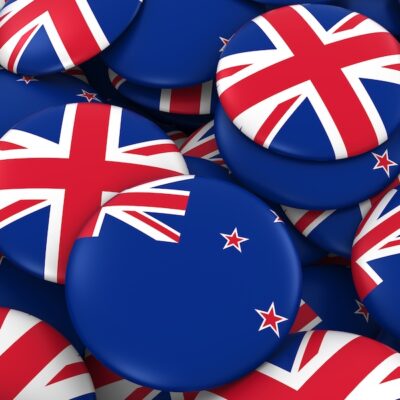The rise of the new oil industry
By 2022 the global essential oil market is expected to reach US$11.19 billion. New Zealand’s manuka oil-based cosmetic and medical product sector is set to be a major contributor. The […]
By 2022 the global essential oil market is expected to reach US$11.19 billion. New Zealand’s manuka oil-based cosmetic and medical product sector is set to be a major contributor.
The East Cape is the first place in the world to see the sun rise. Due to New Zealand’s higher UV readings than anywhere else in the world, the flora and fauna on the East Cape of New Zealand produce greater volumes of various “sunscreen chemicals” to protect themselves. These include polyphenols in mānuka flowers and beta-triketones in mānuka oil. This means that New Zealand’s East Cape produces mānuka oil with more potency than anywhere else in the world. Mānuka oil is an essential oil (embodying the essence of the plant), which is steam distilled from the leaf and small branchlets of the mānuka bush. Until recently most of New Zealand’s mānuka oil production came from wild-harvested mānuka, which on the East Cape meant rocky difficult farming terrain. Local community crews of harvesters using brush cutters, gathered fresh branches, leaving the bushes viable for regrowth available for future years. With its growing demand we’re now seeing mānuka plantations replacing nearby traditional farmland. With a yield of only about 1% of liquid to the weight of the branches, the resulting oil is precious.
It has been predicted that due to Covid 19, demand for mānuka oil will increase exponentially as it is naturally ‘antimicrobial’ (encompassing antibacterial, antiviral and antifungal properties) making it the next ‘in’ ingredient in skincare because of its ability to be included in cosmetics of all kinds providing antimicrobial benefits. Bacteria are unable to develop resistance to mānuka oil due to its many bioactive compounds and rich chemical diversity.
Tea tree oil has until now enjoyed its time in the sun as the leading antibacterial oil. Tea tree oil is derived from the leaves of the Melaleuca alternifolia, a small tree native to Queensland and New South Wales, Australia. When packed and distributed for commercial use, the oil is generally not diluted. However when used in the cosmetic industry, FMCG sector and the pharmaceutical industry the oil is usually diluted to the preference of the end user. The increase in demand from various sectors have boosted the tea tree oil market growth.
By 2022, the global essential oil market is expected to reach US$11.19 billion with a CAGR of 9.1%.* Australia is the major producer of tea tree oil, with smaller producers based in China, South Africa, Kenya, Indonesia and Thailand. Around 90% of the oil is exported to different countries in North America and Europe, with around 50% of tea tree oil exports used for healthcare, cosmetics, pharmaceuticals, veterinary and aromatherapy products. (See graph below)
Mānuka oil has been proven by the Cawthron Institute of New Zealand to be 20-30 times more effective against gram positive bacteria such as Staphylococcus aureus (staph) and Streptococcus pyogenes (strep) than Australian tea tree oil. Tea tree oil has rocketed in popularity due to it being particularly effective against acne and is the number one seller at The Body Shop worldwide. The tea tree industry in Australia produces around 800 tons of oil annually. In New Zealand production of mānuka oil is less than 10 tons presently.
In the last year the mānuka industry sustainably planted more than 500,000 mānuka plants on the East Cape and more than 500,000 more are planned for 2020/21 to help meet future demand. Based on the tea tree oil industry growth, the market for mānuka oil can easily grow to be 100 tons annually, says Mark Kerr of Tairawhiti Pharmaceuticals. For bulk oil that is only about $10m annually, however if it is used as an ingredient in cosmetics and pharmaceuticals it’s potentially $450m.
It’s worth noting that 20 years ago the mānuka honey industry was exporting NZD10million annually, currently that sits at over NZD250 million.
More than a hundred people on New Zealand’s East Cape are now employed in the growing mānuka industry. Mānuka was once cut down and cleared and seen as a ‘pest’ by NZ farmers, however it’s now undergone a ‘rebrand’ as such due to the exponential growth in the demand for mānuka honey and is fast becoming an even more highly valued resource now that it’s understood that mānuka oil is at least 1000 times more potent in topical applications than the celebrated mānuka honey we have all grown to covet.
The planting of our native mānuka plant ensures the land is being fully utilised, grown sustainably and ethically harvested – creating a full circle approach. The rapid planting of the native mānuka plant on the East Cape means that land is being reconstituted from dairy farming into cleaner industry farming and is yielding much higher returns for Maori land owners in the area. It’s also more effective and efficient land use in supporting the health of the soil and land for years to come.
With companies seeing opportunity for massive growth in demand for the mānuka plant, it’s no surprise that Manuka Bioscience has launched to oversee research, investments and strategic partnerships for the industry moving forward.
Dr Suki Harding, Director and Head of Research & Development at Manuka Bioscience is working with external research partners and Callaghan Innovation to maximise the value of the company’s manuka oil-based cosmetic and medical products. “Independent research shows that our manuka oil-based therapeutic extracts are highly effective against staph bacteria that causes infections such as school sores, boils, sties, abscesses, folliculitis and cellulitis, as well as antibiotic resistant MRSA bacteria that causes serious surgical wound infections.
“Our aim is to capitalise on the unique therapeutic value of mānuka oil by developing a broad range of topical products for New Zealanders of all ages and customers around the world”.
Global essential oils giant dōTerra is even purchasing mānuka oil grown on the East Cape for its global network as it forecasts for huge demand increases in the years to come.
In 2015, just their seventh year, when dōTERRA crossed the $1 billion revenue line, Vice President of corporate relations, Kirk Jowers said the company had “just scratched the surface.” Given how mānuka oil lines up with tea tree oil, the future looks promising.
Article supplied by ManukaRx. Links: https://manukabioscience.co.nz/; https://manukarx.co.nz/
*Stats are from allied market research – https://www.alliedmarketresearch.com/tea-tree-oil-market






